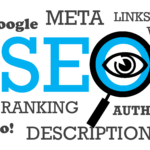Why Bounce Rate Isn’t the Metric You Should Be Obsessing Over
In the ever-evolving realm of digital marketing, the metrics we use to gauge success are continually changing. There’s one metric, however, that has stirred up quite the debate over the years: Bounce Rate. It’s a figure that’s been thrown around often, with some marketers swearing by its importance and others, like myself, questioning its true relevance.
So, let’s dive into this. What if I told you that a high bounce rate might actually indicate that your content is exactly what the reader was looking for?
Busting the Bounce Rate Myth
Imagine this scenario: A user types into Google, “how to choose an LED TV”. They find your article, spend a delightful 10 minutes soaking in every word, get their questions answered comprehensively, and then depart satisfied. Sounds like a win, right? Yet, from a technical perspective, this would yield a bounce rate of 100%. Ouch.
Now, picture a contrasting scene: A user lands on your page, expecting certain information. Frustratingly, they can’t find what they’re looking for. They click around aimlessly, hoping to stumble upon the answers, but to no avail. Ironically, this scenario would register a low bounce rate.
So, which of these would you prefer? The answer is clear.
Why Bounce Rate Isn’t Always What It Seems
Bounce rate simply indicates the percentage of visitors who enter a site and then leave without proceeding to view any other pages. It doesn’t give any context about the user’s experience or satisfaction level. A high bounce rate might mean a user didn’t find what they were looking for, or it might mean they found precisely what they needed on that one page and didn’t need to search further.
Google’s Stance on Bounce Rate
If you’re wondering whether Google uses bounce rate as a ranking factor, rest assured, it doesn’t. Why? Because Google recognizes that bounce rate can be a very poor indicator of whether a page satisfies the searcher’s intent.
Google’s primary objective is to deliver the most relevant and useful results to users. So, if a user finds their answer on a single page and doesn’t feel the need to explore further, Google considers this a success. Bounce rate doesn’t encapsulate this nuanced understanding of user satisfaction.
What Should We Focus On Instead?
Rather than losing sleep over bounce rate, direct your attention to metrics that offer deeper insights into user engagement and satisfaction:
- Time on Page: How long are visitors spending on your page? A longer duration can indicate that they’re finding your content valuable.
- User Feedback: Utilize surveys or feedback tools to gauge how users feel about your content. Direct insights can be invaluable.
- Conversion Rates: Are visitors taking desired actions on your site, like signing up for newsletters or making purchases?
- Page Views per Session: This can provide clues about the depth of engagement.
Wrapping It Up
While bounce rate can offer some insights, it’s crucial to interpret it within a broader context and not in isolation. Remember, high-quality content that answers a user’s questions comprehensively might lead to a “perfect” user experience, even if it results in a high bounce rate. Focus on understanding your audience, answering their queries, and providing immense value. That’s the real key to success in the digital realm.






